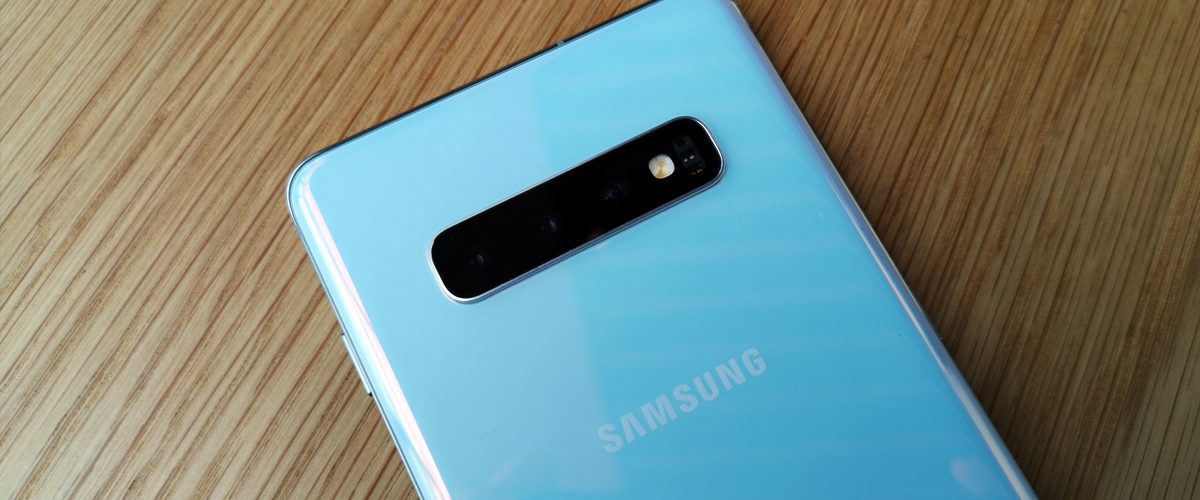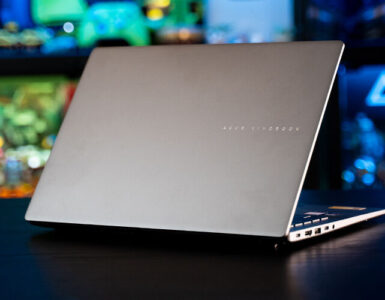In the last five years, two major smartphone brands have been at the forefront of innovation and design, producing some of the best phones that the world has ever seen. Only one of them is powered by the Android operating system, and the company has just released the most amazing device yet – the Samsung Galaxy S10+.
(If you wondering about a more apple to apple comparison between Samsung and Huawei, let’s just say that the past two months has proven to rather insightful for the Chinese smartphone giant. More below)
Whether it’s from a design perspective, where the beautiful, edge-to-edge Infinity-O display dominates; a hardware edge, with its next level, 8 nm Exynos 9820 Octa-core processor; a software advantage, with its photography capabilities; or a mix of features and improvements, especially with its new on-display biometrics, the Galaxy S10+ is the one phone that Samsung, and the smartphone industry, has been building towards for the last decade.

It seems almost boastful, to claim that one company deserves all the credit, but it’s just like the art of fine dining – improvements in food preparation, cooking methodology and knowledge of application might have been developed elsewhere, but it takes a trained professional to compile everything into one gastronomical experience, which is what the South Korean giant has done.
Just do we’re clear, Samsung has (currently) launched three variants of its Samsung Galaxy S10 series – the regular 6.1-inch Galaxy S10, the larger 6.4-inch Galaxy S10+, and the entry level Galaxy S10E, which sports a smaller 5.8-inch screen. There are also some minor differences between the three, such as a smaller battery on the Galaxy S10 and Galaxy S10E, a lack of on-display biometrics on the Galaxy S10E, as well as differences in-camera features.
In that regard, the Galaxy S10+ is the leader among the giants, and the premium smartphone across all brands.
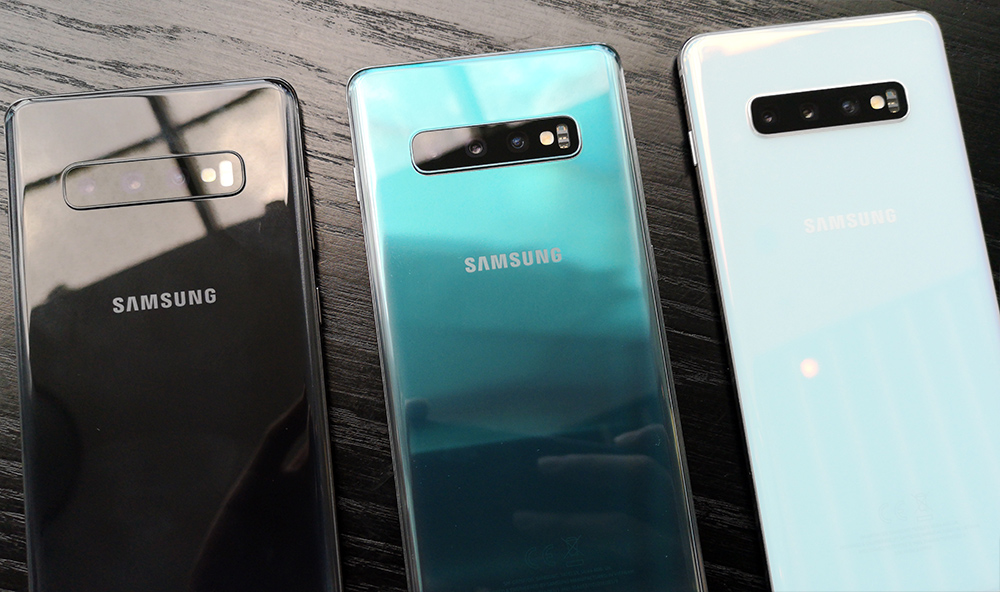
So what’s new? It’s the small things that work together. Having an all-round display has been the goal for many smartphone companies, but in recent years, there have been some physical limitations. The removal of the Home button has meant that new gesture controls have taken control, but without a universal interface, it gets confusing for the consumer. The Home button might be gone here, but the side buttons still play a part. Double tapping on the Power button on the right edge coughs up the camera mode. Bixby, Samsung’s smart assistant, can be activated on the button located on the left edge of the device.
What about biometrics, which has been placed on the Home button before, or in the rear, where it isn’t as convenient to use? The Galaxy S10+ now uses on-screen biometrics, and anytime you pick up the phone, a small icon pops up at the bottom of the screen. Place whichever finger of your convenience, and the phone fires right up. If you prefer to use facial recognition instead, you can opt for that.
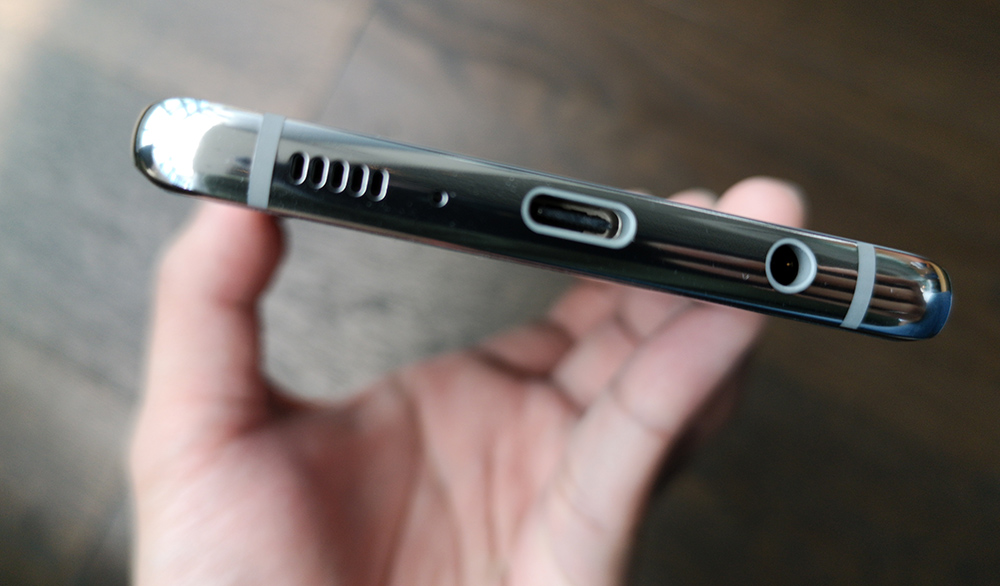
Alas, the iris scanner, which has been used by Samsung as a third security feature is no longer available, and the reason has to do with the other reason why the Galaxy S10+ offers an almost full display – there is no more notch to speak of.
In smartphone design, the notch is that small black area at the top of the phone that houses the front camera and whatever biometrics that scans the facial features of the user. Its presence has been a highly controversial one, as it creates a black bar on the top of the screen. The notch happens when a manufacturer decides to block off the middle area of this black bar, but still illuminate the sides, though this effectively makes the sides unusable, as the notch area covers that part of the screen anyway.
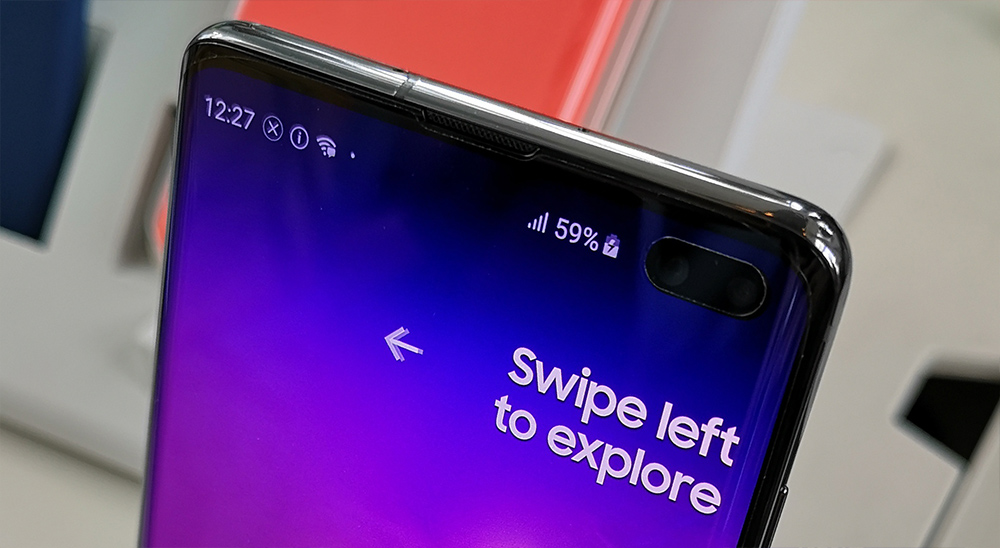
Without an iris scanner, the front dual cameras are now two simple round sensors housed in an oval window, located on the top-right edge of the screen. Its presence is also highly negligible, because that horizontal column, about 4mm thick, is where Android puts the notification bar, which means that space, which details the time, network settings, alarm and app notifications now has a new hole punch area. Now, you can still opt for the whole top area to be a black bar, but it’s unnecessary.
But if you know Samsung, the change in the front camera is nowhere comparable to the change in the rear camera, where there are now three cameras – standard, wide and ultrawide. The fascination with multiple cameras is simply a progression of camera performance and details but while some phone makers are dialing up the insanity with 40MP cameras or 4 or even 5 rear ones, the simplicity of having 3, marked by both software and hardware elegance is the best feature yet.
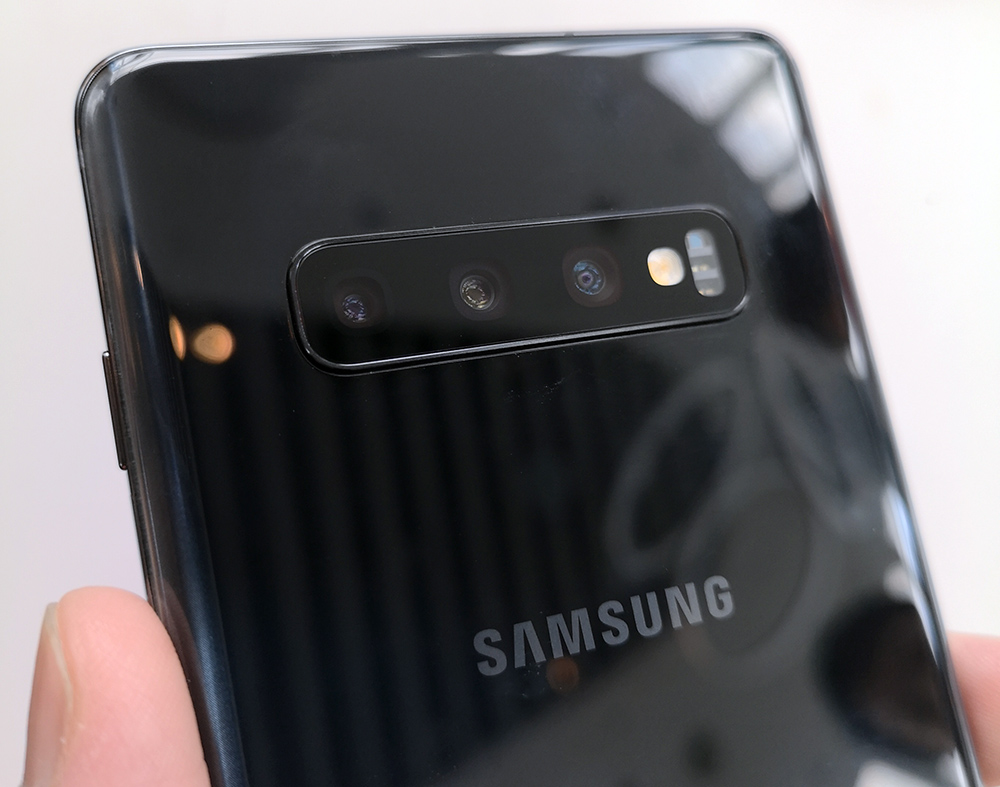
The primary camera is a 12 MP, 26mm wide, dual pixel camera, with PDAF (phase detection autofocus), and f/1.5-2.4, and optical image stabilisation. Then there is the 12 MP, 52nn telephoto lens, with f/2.4, auto focus, OIS and 2x optical zoom. The final is a 16 MP, 12mm ultrawide with f/2.2.
All three work very well, and there’s even an icon right above the on-screen shutter button, for users to switch between modes quickly, to snap that perfect photo. It would have been nice to have a software feature to snap one photo in each mode in quick succession, so that certain shots, such as architecture or wide areas can be taken with just one touch, but that’s secondary to the incredible performance of the camera.
Here are some samples:
Is the phone perfect? It was designed to be but during my three months with it, the biometrics proved to be inadequate. It reminds me of the first time Samsung rolled out iris scan, and there were initial hiccups with recognition and unlocking. The process got better over time, and the same goes for on-screen biometrics. Given the dozens, if not hundreds of times users unlock their phone daily, it needs to be intuitive, fast and foolproof. As of now, Apple’s facial unlock is proving to be the most reliable way to unlock a device.
But how does the Samsung Galaxy S10+ stack up against the Huawei P30 Pro? Both are flagship devices that are competing head to head in the Android market segment, and Huawei’s meteoric rise has shaken up the market. Both have great cameras, and are the best at what they do.
Except that Huawei’s reputation has taken a beating recently, after it was targeted by the United States government. Companies such as Google initiated trade actions against the company, and for a while, there was worry that the value of a Huawei phone would fall drastically. For a while, folks were dumping their Huawei devices, so much so that locally, some retailers had to resort to offering guarantees about the performance of a Huawei phone.
No smartphone company is perfect of course – Apple had Applegate and Samsung had the fiasco with the Note 7’s battery, but both companies managed to course-correct on their own. Unfortunately for Huawei, their situation has been caused by political inclinations, and what is to say that after this is over, the next “incident” won’t surface again?
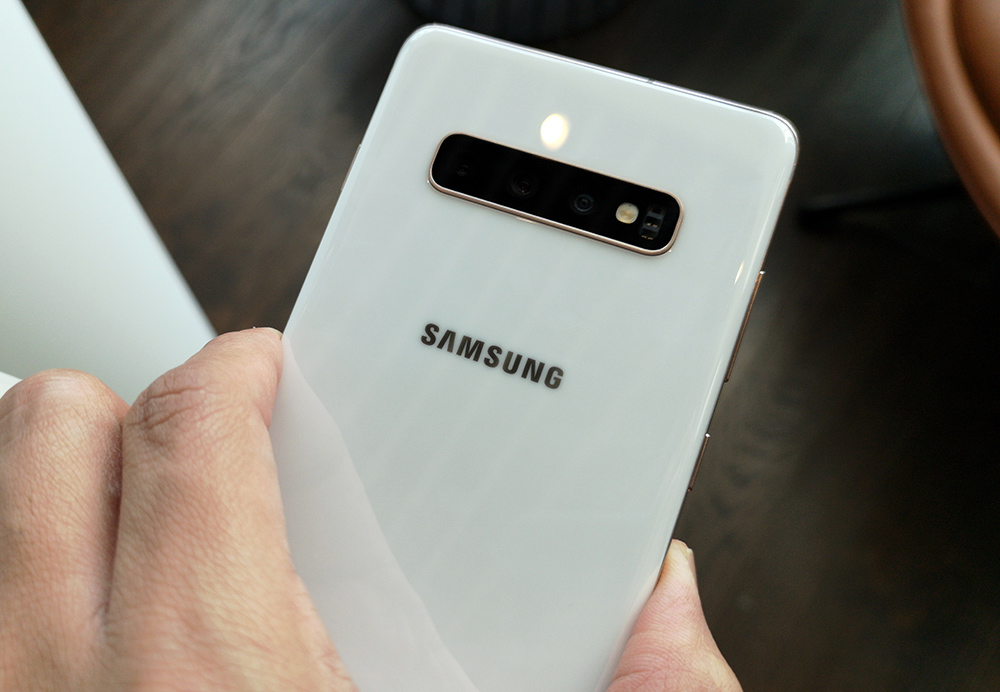
While these incidents won’t impair the performance of the P30 Pro for now, there is something to be said about picking up a device that does not have a dark shadow hanging over its head.
In a few weeks, Samsung will be announcing and launching the Galaxy Note 10, the company’s second flagship device that comes with a writing instrument. There will definitely be improvements then, but the good news is, if you don’t need a digital pen, the subsequent price drop for the Galaxy S10 means it’s the best time to pick up this Android device.
GEEK REVIEW SCORE
Summary
Even after three months, the Samsung Galaxy S10+ continues to shine.
Overall
9/10
-
Aesthetics - 10/10
10/10
-
Build Quality - 9/10
9/10
-
Performance - 9/10
9/10
-
Value - 8/10
8/10
-
Geek Satisfaction - 9/10
9/10

